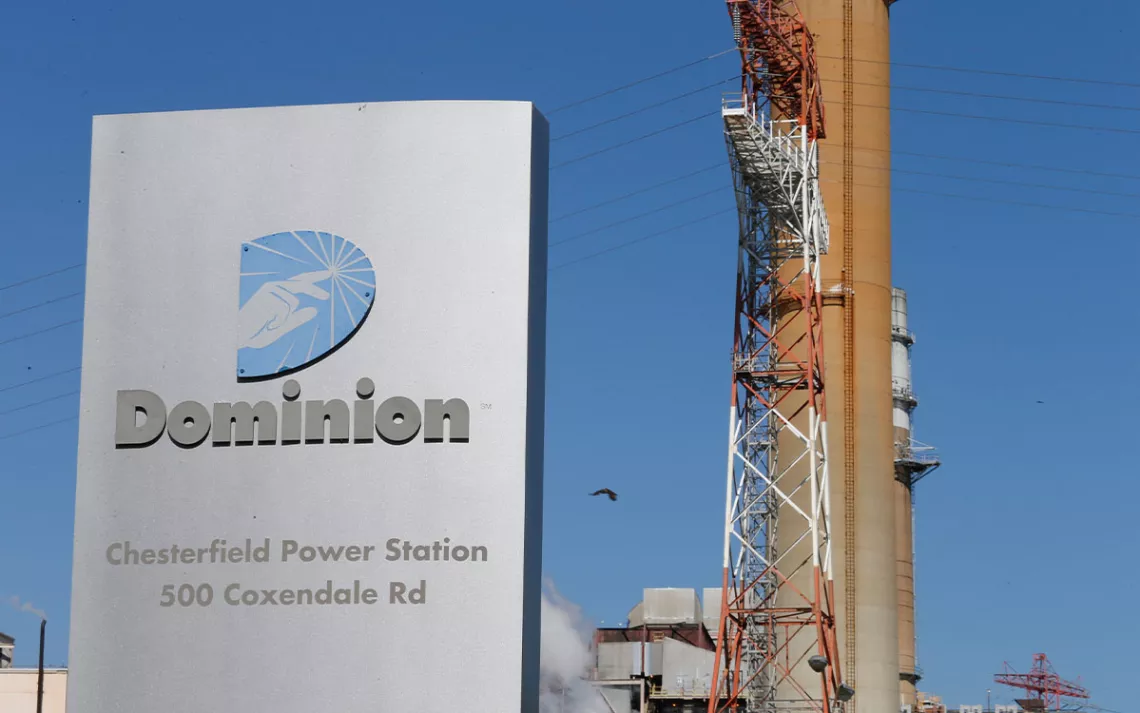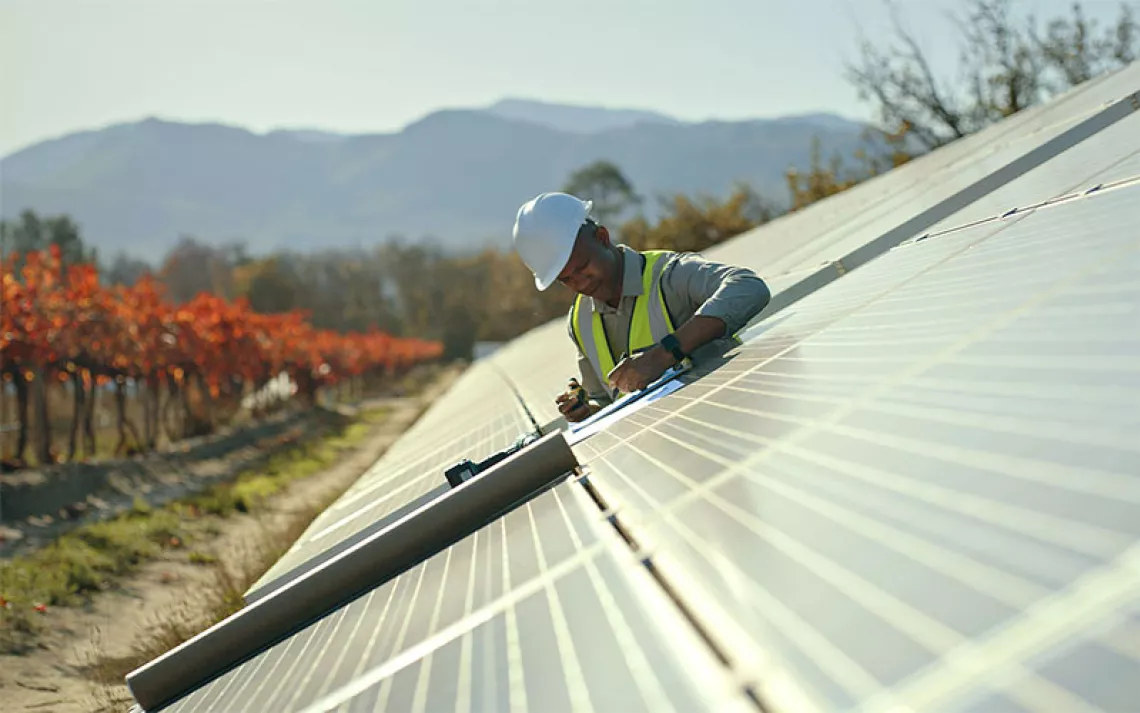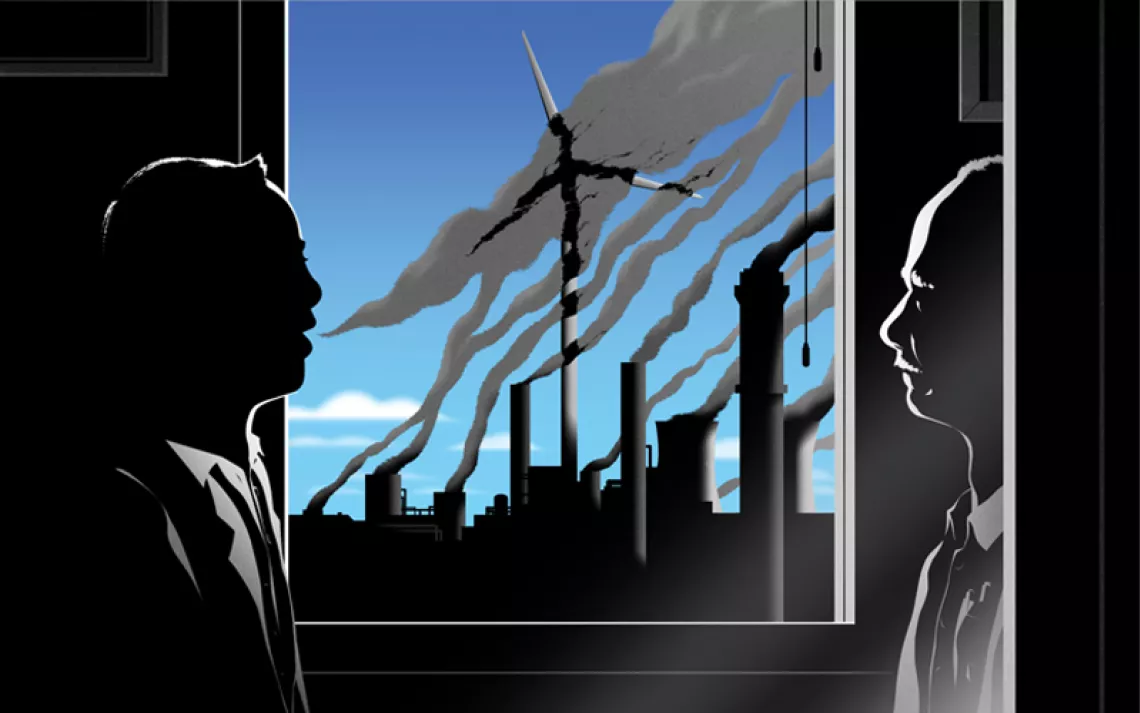Dominion Energy Is Pushing a Gas-Burning Chesterfield Plant Near Disadvantaged Communities
The peaker plant, if built, would be the largest in Virginia

Photo by Steve Helber, AP File
In some parts of the United States, a green transition from polluting sources of energy—such as coal and fracked gas to wind and solar—is moving at astonishing speed. But that is cold comfort for residents in Chesterfield County, Virginia, where a local energy company is pushing forward with plans to build what it is calling "the Chesterfield Energy Reliability Center”—a mammoth 1,000-megawatt fracked-gas plant that local residents and activists say will pollute the local environment and contribute to greenhouse gas emissions at a time when the climate crisis is accelerating.
Dominion Energy, a Virginia-based company, says its proposed “peaker plant” will provide better service during extreme grid demand, offering power for up to 250,000 homes. That power will come from fossil fuels. The plant is estimated to release around 7 billion pounds of carbon dioxide each year, the equivalent of adding 120,000 cars to the road. If built, it would be the largest peaker plant in Virginia, with four new generators. Peaker plants like the one Dominion is proposing are also known for emitting pollutants harmful to human health such as small particulate matter, nitrous oxides, and ozone. These can form particulate matter (PM2.5), which can enter the bloodstream and intensify health conditions and lead to premature death.
The company wants to site the plant near the James River—a waterway that is already rife with pollution from heavy industrialization—near neighborhoods that are historically disadvantaged and primarily composed of communities of color.
According to Dominion, energy demand from recent extreme weather—like Christmas Eve last year, when temperatures were as low as 9℉, and July 28, when the heat index was over 100℉—proves why this plant is a necessity. “This project is all about reliability and keeping our customers' lights on when they need it the most,” a company spokesperson says.
But community organizers say there is no excuse for the company’s decision to turn to polluting fossil fuels for the source of that energy and to site that facility near low-income communities. According to the EPA, 44 percent of the area around the proposed energy center is a community of color, and 25 percent is low-income.
“There was plenty of room for solar development, battery storage, and alternative technology,” says Tim Cywinski, a Sierra Club Virginia Chapter spokesperson. “Clean energy should have been the first choice, but Dominion instead jumped back into an antiquated option. People here have been harmed enough economically and healthwise, and this plant will inflict more.”
In 2020, then-governor Ralph Northan signed into law the Virginia Clean Economy Act, which established a renewable energy portfolio standard for the two utilities in the state, Dominion Energy and Appalachian Electric Power. The law requires that both utilities be completely carbon free by 2045. Opponents are skeptical that Dominion will meet the law’s zero-emission and energy-efficiency requirements. “New gas plants have an anticipated lifespan of 40 years,” says Victoria Higgins, the Chesapeake Climate Action Network’s Virginia director. “Dominion’s gas plant would continue emitting carbon 22 years after the company is required to achieve zero emissions.”
The plant will also be more expensive for local communities. A Department of Energy study estimates that those in low-income communities end up paying almost 9 percent of their earnings in energy costs compared to only 3 percent for those with higher incomes. Gas peaker plants generate electricity anywhere from $115 to $198 per MWh. These operational costs could eventually be passed along to consumers.
“When we were knocking on doors talking with people, it was always about the cost. In a neighborhood less than two miles away, a quarter are already below the poverty line, and the costs will be passed to them,” says Cywinski. “That makes a difference when people are trying to buy groceries or afford gas to get to work.”
Governor Glenn Youngkin has also sought to backtrack on the state's clean energy commitments. His administration pulled Virginia from the Regional Greenhouse Gas Initiative and released a 2022 Virginia Energy Plan, which puts nuclear and fracked gas sources in the mix with renewable energy. That could make it easier for companies like Dominion to continue burning fossil fuels.
“Although Dominion is calling this a peaker plant, it would run 3,240 hours per year or 37 percent of the time,” says Higgins. “Peaker plants usually only operate a couple hundred hours per year. Dominion is intentionally misleading the public by downplaying the impact this massive gas plant would have on the local community.”
This isn’t the first Dominion project that has raised opposition. In 2019, the Surry-Skiffes Creek Transmission Line was energized on Virginia’s peninsula despite objections to its unfavorable impact on the James River landscape. In 2022, the company received approval to build a 176-turbine wind farm in the Atlantic Ocean, one of the largest offshore wind projects in North America, although there were worries about hidden bill increases. In June 2023, a handful of Virginia solar developers filed a petition with the State Corporation Commission against Dominion’s solar project interconnection policies. The state agency recently ruled that the company must suspend them.
The county’s board of supervisors are up for reelection in November and will play a role in whether the energy center is officially brought to fruition.
“There’s a lot of activity going on, all of which is community-led and focused on making noise of disapproval,” Cywinski says. “We won’t stop until the community is empowered enough to stop this project.”
 The Magazine of The Sierra Club
The Magazine of The Sierra Club







